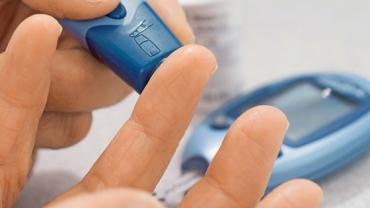
According to a study published three days ago in the Journal of the American Board of Family Medicine less than 25% of patients who met the criteria for prediabetes received lifestyle recommendations from their primary care physicians. This is a huge missed opportunity for diabetes prevention and the overall health of the patient not to mention for decreasing future health care costs.
Over one-third of the population has prediabetes which is considered to be one of the biggest risk factors for the development of diabetes. This stage represents the most important time to take action and educate these individuals on diet lifestyle and exercise. Approximately 30% of people with prediabetes will develop diabetes within five years if we play the wait and see game and do not make dietary and lifestyle interventions.
In this new study researchers from the University of Florida analyzed data from the 2012 National Ambulatory Medical Care Survey. About 34% of the patients had an HA1c level between 5.7 and 6.4. Of these patients only a few were told they even had prediabetes and only 23% received treatment for their issue (lifestyle modification counseling or medication).
You expect to see low rates of prediabetes diagnosis and treatment if lab results werent available to doctors but the patients in this study all had recent lab tests. Even with the results in front of them doctors were not acknowledging prediabetes in their patients or providing any type of management or treatment.
Insulin resistance is a significant health care problems in the US yet this condition is preventable and reversible through lifestyle changes proper nutrition supplements exercise and stress management. Weight loss and exercise are considered to be the best treatments for restoring the body's ability to respond to insulin. Losing even a few pounds can reduce the risk for health problems and help control glucose levels.
Exercise can help prevent diabetes by lowering blood sugar and reducing weight. It also helps the cells become more sensitive to insulin. In regards to dietary guidelines carbohydrate intake plays a significant role. Following a low glycemic load diet that is high in fiber and low in sugars and flour can yield significant results.
Previous research has indicated that insulin resistance has a microbial component that alters the caloric extraction from ingested food. This ties together the importance of dietary fiber and insulin resistance. We also see this with short chain fatty acids (SCFA) on patient stool profiles. Low levels of SCFAs tend to be associated with low levels of beneficial bacteria. When patients introduce prebiotics or increase their dietary fiber intake by consuming fruits and vegetables the beneficial bacteria and SCFAs both increase.
Healthy whole foods help prevent and reverse diabetes and insulin resistance. A healthy diet turns on the right gene messages promotes a healthy metabolism and prevents insulin resistance and diabetes.
In addition there are several nutrients that can play a role in improving insulin signaling such as chromium zinc carnosine benfotiamine alpha lipoic acid and inositol.
The key to diabetes prevention is properly educating individuals with prediabetes on appropriate diet and lifestyle modifications. Our goal shouldn't be to manage half the population with diabetes but rather to prevent them from getting diabetes in the first place.